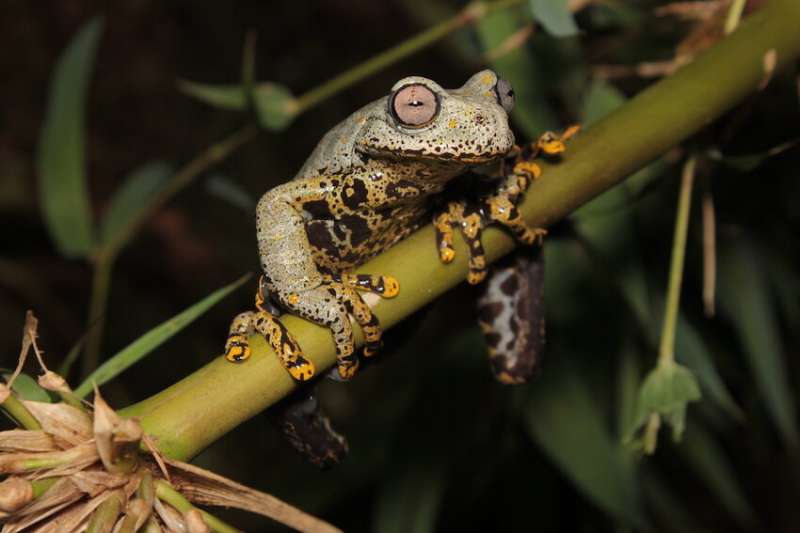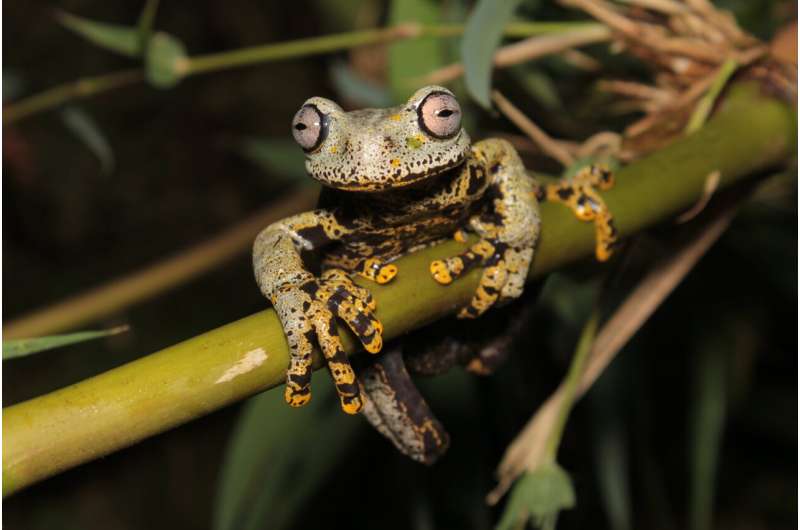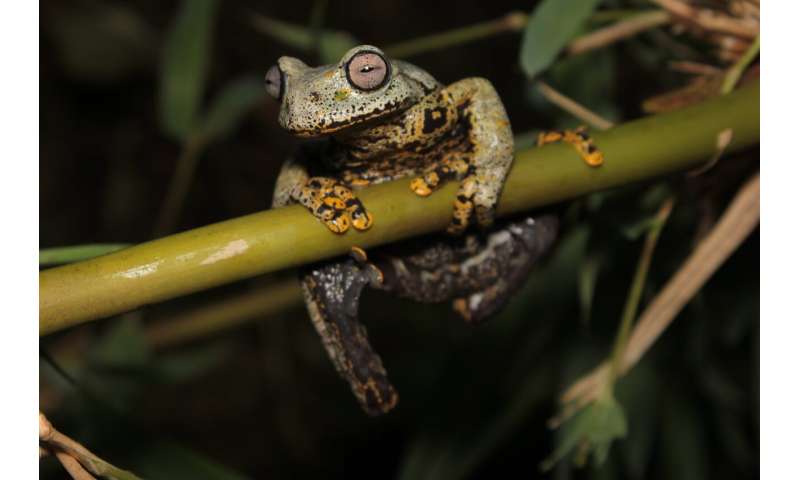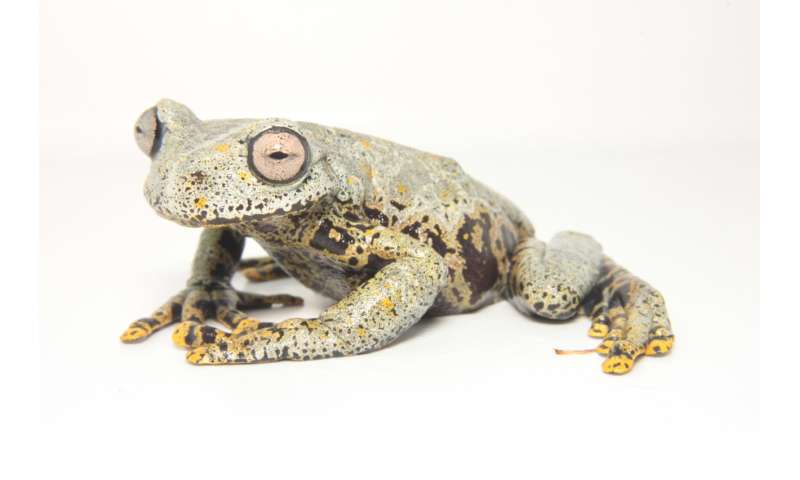New frog species named after fantasy author J.R.R. Tolkien

A magnificent new species of stream frog from the Andes of Ecuador was named after J. R. R. Tolkien, creator of Middle-earth and author of famous fantasy works “The Hobbit” and “The Lord of the Rings.” It lives in the pristine streams of the Río Negro-Sopladora National Park, a recently declared protected area that preserves thousands of hectares of almost primary forests in southeastern Ecuador.
Stream frogs are a group of amphibians that inhabit the high Andes of Venezuela, Colombia, Ecuado, Peru, and Bolivia. Their life is closely linked to the pure rivers and streams in the mountain areas of the Andes, hence the name “stream frogs.” The adults live in the riparian vegetation, and their tadpoles develop among the rocks of the rapid waters of the rivers.
The researchers, Juan C. Sánchez-Nivicela, José M. Falcón-Reibán, and Diego F. Cisneros-Heredia, named the new frog Hyloscirtus tolkieni in honor of one of their favorite writer. J.R.R. Tolkien, a renowned author, poet, philologist and academic. The amazing colors of this new frog species reminded them of the magnificent creatures from Tolkien’s fantasy worlds.
Expeditions carried out since 2020 in the Río Negro-Sopladora National Park in Ecuador have allowed the discovery of a large number of species yet unknown to science. A protected area since 2018, this national park, located in the south of the country, is home to large forested areas that remain unstudied.

“For weeks, we explored different areas of the Río Negro-Sopladora National Park, walking from paramo grasslands at 3,100 meters elevation to forests at 1,000 m. We found a single individual of this new species of frog, which we found impressive due to its coloration and large size,” said Juan Carlos Sánchez Nivicela, associate researcher at the Museum of Zoology of the Universidad San Francisco de Quito USFQ and the National Institute of Biodiversity, and co-author of the study where the frog is described.
The Río Negro Stream Frog is easily differentiated from all its frog relatives by its appearance and unique coloration. It is relatively large (65 mm long), a grayish green back with yellow spots and black specks, and a pale pink and black iris. Its throat, belly and flanks as well as the undersides of its legs are golden yellow with large black spots and dots, and its fingers and toes have black bars and spots and broad skin stripes.
“The new species of frog has amazing colors, and it would seem that it lives in a universe of fantasies, like those created by Tolkien. The truth is that the tropical Andes are magical ecosystems where some of the most wonderful species of flora, funga, and fauna in the world are present. Unfortunately, few areas are well protected from the negative impacts caused by humans. Deforestation, unsustainable agricultural expansion, mining, invasive species, and climate changes are seriously affecting Andean biodiversity,” said Diego F. Cisneros-Heredia, director of the Museum of Zoology of the Universidad San Francisco de Quito USFQ and associate researcher of the National Institute of Biodiversity, and co-author of the study.
The species is still only known from one locality and one individual, so information is insufficient to assess its conservation status and the risk of extinction. However, the authors agree that it is urgent to establish research and monitoring actions to study its life history and ecology, as well as its population size and dynamics. In addition, they suggest exploring new sites where additional populations may exist, and assessing whether their long-term conservation is affected by any threats, such as invasive species, mining, emerging diseases, or climate change.
-

Hyloscirtus tolkieni. Credit: Juan Carlos Sánchez-Nivicela / Archive Museo de Zoología, Universidad San Francisco de Quito
-
![New frog species named after fantasy author J.R.R. Tolkien]()
Hyloscirtus tolkieni. Credit: Juan Carlos Sánchez-Nivicela / Archive Museo de Zoología, Universidad San Francisco de Quito
The description of new species is an important mechanism to support global strategies for the conservation of vulnerable environments, since it reveals the great wealth of biodiversity that is linked to countless natural resources and environmental services. For example, amphibians are important pest controllers and play vital ecological roles in the stability of nature. Unfortunately, 57% of amphibian species in Ecuador are threatened by extinction.
The study is published in the journal ZooKeys.
More information:
Juan C. Sánchez-Nivicela et al, A new stream treefrog of the genus Hyloscirtus (Amphibia, Hylidae) from the Río Negro-Sopladora National Park, Ecuador, ZooKeys (2023). DOI: 10.3897/zookeys.1141.90290
Citation:
New frog species named after fantasy author J.R.R. Tolkien (2023, February 13)
retrieved 13 February 2023
from https://phys.org/news/2023-02-frog-species-fantasy-author-jrr.html
This document is subject to copyright. Apart from any fair dealing for the purpose of private study or research, no
part may be reproduced without the written permission. The content is provided for information purposes only.
For all the latest Science News Click Here
For the latest news and updates, follow us on Google News.


